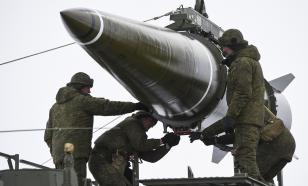Russia aims to lay claim to North Pole natural resources
Sunday, July 29th, could go down as a memorable event in terms of Russian oceanology. Two deep-sea submersibles Mir-1 and Mir-2 made an unprecedented test dive in polar waters Sunday, reaching the seabed 47 nautical miles (87 kilometers) north of Russia’s northernmost archipelago, Franz Josef Land in the Barents Sea. The Akademik Fyodorov, the flagship of the expedition “Arktika-2007”, has launched the submersibles, said Vladimir Strugatsky, a vice president of the Association of Russian Polar Explorers, in an interview on Sunday.

The test dive began at 9.15 a.m. with the launch of Mir-1 piloted by Analoly Sagalevech, one of the developers of the submersibles. Mir-2 followed suit fifteen minutes later. The second submersible was piloted by Evgeny Chernyaev, a prominent hydronaut. It took about one hour for the deep-sea vessels to reach the seabed at a depth of 1,311 meters. The Mir-type submersibles entered service 18 years ago. In the past, during a number of missions headed by Academician Sagalevich, the submersibles were capable of diving to record depths of more than 6,000 meters. The hydronauts took part in about 30 expeditions, including on-site research operations after the Komsomolets and Kursk nuclear submarines sank in the tragic accidents in 1989 and 2000, respectively. The submersibles were also actively used during an expedition involving the Oscar-winning director James Cameron.
The latest test dive is only a stage rehearsal being part of a large-scale research of the Arctic region, said Artur Chilingarov, head of the Arktika-2007 expedition, who is also Hero of the Soviet Union and Doctor of Geography. The main dives of the program are slated for July 30th and 31st. The submersibles will be launched to scoop samples at a depth exceeding four kilometers in the vicinity of the Lomonosov Ridge and Gekkel Ridge.
Research is only part of the mission. In a way, the expedition is set to reaching a geopolitical goal too. The hydronauts are planning to carry out work for defining the boundaries of Russia’s continental shelf extending north of the New Siberian Islands to the North Pole. The Soviet Union and, subsequently, Russia had formally owned the above territory since the 1920s. However, Russia called into question its title to the territory by ratifying the 1997 Convention on the Maritime Law, which states that the Russian Federation (one of the countries with territory inside the Arctic Circle) can claim only a 320 kilometer economic zone around its coastline.
Expedition leader Artur Chilingarov hopes that Russia could benefit from findings to be obtained by his team. Pursuant to the norms of the international law, Russia could claim the territory makes part of its continental shelf provided irrefutable evidence is gathered to prove that the Lomonosov and Mendeleev Ridges, which stretch toward Greenland, are part of the Siberian continental platform. More importantly, Russia would claim its ownership of the rich energy resources under the North Pole. According to some experts, oil and natural gas reserves deposited under the North Pole are estimated at 100 billion tons at the very least. In the meantime, Russian scientists will claim the territory symbolically for Russia by planting the Russian flag on the seabed under the Pole during their mission.
Vremya Novostei
Translated by Guerman Grachev
Pravda.ru
Subscribe to Pravda.Ru Telegram channel, Facebook, RSS!


